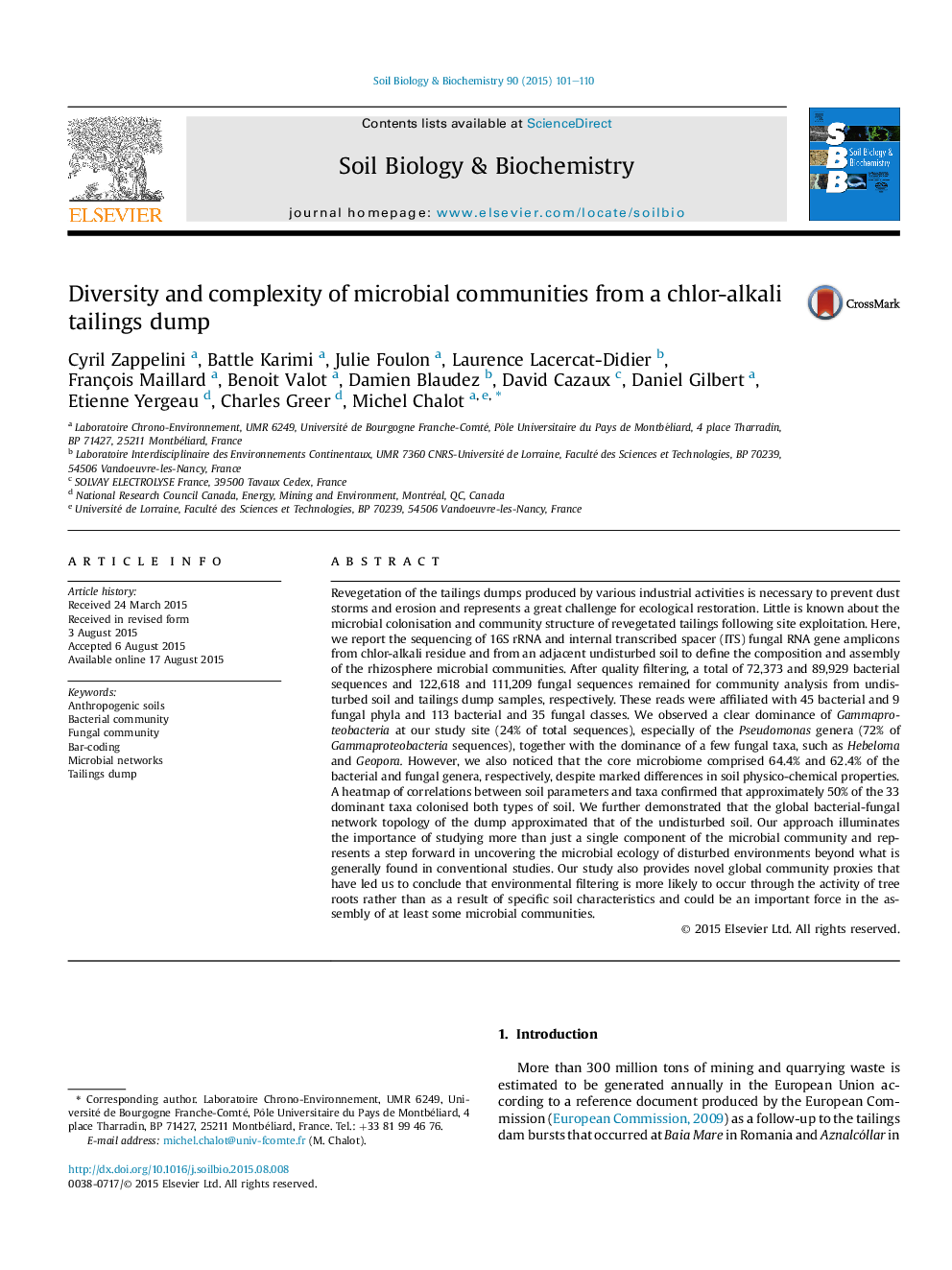| Article ID | Journal | Published Year | Pages | File Type |
|---|---|---|---|---|
| 2024383 | Soil Biology and Biochemistry | 2015 | 10 Pages |
•We report the sequencing of 16S RNA and ITS fungal RNA genes from a chlor-alkali dump.•We observed a clear dominance of the Pseudomonas genera (72% of γ-proteobacteria).•The core microbiome comprised 64.4% and 62.4% of the bacterial and fungal genera.•Environmental filtering is more likely to occur through the activity of tree roots.
Revegetation of the tailings dumps produced by various industrial activities is necessary to prevent dust storms and erosion and represents a great challenge for ecological restoration. Little is known about the microbial colonisation and community structure of revegetated tailings following site exploitation. Here, we report the sequencing of 16S rRNA and internal transcribed spacer (ITS) fungal RNA gene amplicons from chlor-alkali residue and from an adjacent undisturbed soil to define the composition and assembly of the rhizosphere microbial communities. After quality filtering, a total of 72,373 and 89,929 bacterial sequences and 122,618 and 111,209 fungal sequences remained for community analysis from undisturbed soil and tailings dump samples, respectively. These reads were affiliated with 45 bacterial and 9 fungal phyla and 113 bacterial and 35 fungal classes. We observed a clear dominance of Gammaproteobacteria at our study site (24% of total sequences), especially of the Pseudomonas genera (72% of Gammaproteobacteria sequences), together with the dominance of a few fungal taxa, such as Hebeloma and Geopora. However, we also noticed that the core microbiome comprised 64.4% and 62.4% of the bacterial and fungal genera, respectively, despite marked differences in soil physico-chemical properties. A heatmap of correlations between soil parameters and taxa confirmed that approximately 50% of the 33 dominant taxa colonised both types of soil. We further demonstrated that the global bacterial-fungal network topology of the dump approximated that of the undisturbed soil. Our approach illuminates the importance of studying more than just a single component of the microbial community and represents a step forward in uncovering the microbial ecology of disturbed environments beyond what is generally found in conventional studies. Our study also provides novel global community proxies that have led us to conclude that environmental filtering is more likely to occur through the activity of tree roots rather than as a result of specific soil characteristics and could be an important force in the assembly of at least some microbial communities.
